 The unstoppable new Force Gurkha E.O.V. 4X4x4 steamrolls through the severest of trails without breaking into a sweat
The unstoppable new Force Gurkha E.O.V. 4X4x4 steamrolls through the severest of trails without breaking into a sweat
AS WE ENTERED THE FORCE MOTORS’ facility, I was pleasantly surprised to see the wall donning an outsize poster of Car India’s Editor Aspi Bhathena driving the previous generation Gurkha on a dirt-trail.
 Although the 4×4 was mainly exported, some might remember the 4×4, based on the older generation Mercedes-Benz GWagon, since some 40 odd vehicles were also sold locally. Today, we are here to test the updated 2013 model of the Gurkha, Force Motors’ second offering in the passenger car segment apart from the Force One.
Although the 4×4 was mainly exported, some might remember the 4×4, based on the older generation Mercedes-Benz GWagon, since some 40 odd vehicles were also sold locally. Today, we are here to test the updated 2013 model of the Gurkha, Force Motors’ second offering in the passenger car segment apart from the Force One.
 Funny as it may sound, it’s now called the Force Gurkha E.O.V. 4x4x4. No, this isn’t a typo; the three 4s stand for a
Funny as it may sound, it’s now called the Force Gurkha E.O.V. 4x4x4. No, this isn’t a typo; the three 4s stand for a
four-wheel drive vehicle suitable for all four seasons and can be driven across four different kinds of terrain. This
truly is a thoroughbred off-roader that can take some serious beating without flinching. The Gurkha is equipped with a four-wheel drive, mechanical differential locks for front and rear axles, low-ratio gearbox, offroading tyres and a snorkel that allows it to wade through 550-mm deep water!
 Design-wise, the engineers have given the Gurkha a completely new front, which achunky platic, flared wheel-arches and sturdy metal footboard on the side to suit modern taste and its 4×4 abilities. Thankfully, it retains the old-school boxy design, reminiscent of the Mercedes-Benz G-Wagon, with short front and rear overhangs. The impressive 37-degree approach and 34-degree departure angle along with a high 210-mm ground clearance can take you almost anywhere you would dare to go.
Design-wise, the engineers have given the Gurkha a completely new front, which achunky platic, flared wheel-arches and sturdy metal footboard on the side to suit modern taste and its 4×4 abilities. Thankfully, it retains the old-school boxy design, reminiscent of the Mercedes-Benz G-Wagon, with short front and rear overhangs. The impressive 37-degree approach and 34-degree departure angle along with a high 210-mm ground clearance can take you almost anywhere you would dare to go.
 The fit-and-finish is just about average, plenty of ordinary plastic used on the basic two-tone dashboard and I spotted inconsistent gaps between the body-parts. It might be on a par with the Mahindra Thar or even a shade better, but there is ample scope for improvement. The visibility from the driver’s seat is great, thanks to the narrow A-pillars, which helped me position the Gurkha more accurately on the tortuous trail. However, the driving position is more truck-like with an upright, oversized steering wheel, which comes without rake adjustment The new seats are quite comfortable and the large windows make the cabin nice and bright. The two-door hard-top version comes with the modern front facing seats, which can be accessed by toppling the front seats ahead. There is no scarcity of knee or leg room and, like the front seats, these offer great support.
The fit-and-finish is just about average, plenty of ordinary plastic used on the basic two-tone dashboard and I spotted inconsistent gaps between the body-parts. It might be on a par with the Mahindra Thar or even a shade better, but there is ample scope for improvement. The visibility from the driver’s seat is great, thanks to the narrow A-pillars, which helped me position the Gurkha more accurately on the tortuous trail. However, the driving position is more truck-like with an upright, oversized steering wheel, which comes without rake adjustment The new seats are quite comfortable and the large windows make the cabin nice and bright. The two-door hard-top version comes with the modern front facing seats, which can be accessed by toppling the front seats ahead. There is no scarcity of knee or leg room and, like the front seats, these offer great support.
 Under the square bonnet is a Mercedes-Benz OM616-derived 2,596-cc turbo-charged, inter-cooled, direct-injection diesel motor that is capable of a humble 82 PS which peaks at just 3,200 revolutions per minute and 232 Nm of maximum torque between 1,800 and 2,000 RPM. Currently the engine does not meet BSIV emission norms, but the engineers are working on a cleaner version, which might come out in the near future. In the normal 4×2 mode the rear wheels are powered by a five-speed Mercedes-Benz-sourced G18 gearbox and if the going gets tough, one can engage all-wheel drive using the second gear lever.
Under the square bonnet is a Mercedes-Benz OM616-derived 2,596-cc turbo-charged, inter-cooled, direct-injection diesel motor that is capable of a humble 82 PS which peaks at just 3,200 revolutions per minute and 232 Nm of maximum torque between 1,800 and 2,000 RPM. Currently the engine does not meet BSIV emission norms, but the engineers are working on a cleaner version, which might come out in the near future. In the normal 4×2 mode the rear wheels are powered by a five-speed Mercedes-Benz-sourced G18 gearbox and if the going gets tough, one can engage all-wheel drive using the second gear lever.
 I got a chance to experience the Gurkha’s abilities on a short endurance test track especially created by Force Motors. Although I expected it to do fairly well over tortuous roads (going by Aspi’s 2008 review) the vehicle left me stunned by its unbelievable offroading prowess. Mounted on a sturdy ladder-on-frame chassis, it’s sprung on an independent, double wishbone arrangement with an anti-roll bar suspension in front, while the rear is a leaf-spring with an anti-roll bar. The set-up soaks up the severest of road, or the lack of it, in perfect harmony. On the downside, the towering 2,055 mm of height makes the Gurkha unstable on roads while negotiating a fast corner. But that’s something that one can overlook while appreciating the SUV’s off-roading potential. Despite having disc brakes in front and drums at the rear, it lacked the stopping power needed to bring to halt this bulky 4×4 weighting 1,460 kg.
I got a chance to experience the Gurkha’s abilities on a short endurance test track especially created by Force Motors. Although I expected it to do fairly well over tortuous roads (going by Aspi’s 2008 review) the vehicle left me stunned by its unbelievable offroading prowess. Mounted on a sturdy ladder-on-frame chassis, it’s sprung on an independent, double wishbone arrangement with an anti-roll bar suspension in front, while the rear is a leaf-spring with an anti-roll bar. The set-up soaks up the severest of road, or the lack of it, in perfect harmony. On the downside, the towering 2,055 mm of height makes the Gurkha unstable on roads while negotiating a fast corner. But that’s something that one can overlook while appreciating the SUV’s off-roading potential. Despite having disc brakes in front and drums at the rear, it lacked the stopping power needed to bring to halt this bulky 4×4 weighting 1,460 kg.
 The clutch felt heavy and the gearbox a bit notchy, but no sooner had I released my left foot than the Gurkha darted ahead enthusiastically. It took me a while to get used to the dog-leg as slotting into the first is quite a stretch. Due to the short gearing it was time to shift to second gear as the engine revs only to 3,500 RPM. Although this translates into good throttle control while off-roading, on normal roads it means frequent gear-shifts. The Gurkha badly needs a better gearbox with shorter throws and the same goes for the second gear lever that engages the 4×4.
The clutch felt heavy and the gearbox a bit notchy, but no sooner had I released my left foot than the Gurkha darted ahead enthusiastically. It took me a while to get used to the dog-leg as slotting into the first is quite a stretch. Due to the short gearing it was time to shift to second gear as the engine revs only to 3,500 RPM. Although this translates into good throttle control while off-roading, on normal roads it means frequent gear-shifts. The Gurkha badly needs a better gearbox with shorter throws and the same goes for the second gear lever that engages the 4×4.
 Throughout the challenging course it maintained its poise and ironed out sections which most soft-roads would shy away from. I had no trouble driving it over massive craters and even posed for the camera with two wheels in the air. When it got stuck, all I had to do was to engage the differential locks manually by using a couple of levers dedicated for front and rear axles and it simply clawed out. Engaging the 4×4 low it climbed (jumped over to be honest) a 40-degree slope effortlessly and using the engine’s low-speed idling calibration it even crawled up a 25-degree incline without any throttle input from me, riding on the strong torque. In terms of handling, the power-assisted steering has a slow response and has countless lock to lock turns, which is common in many off-roading machines.
Throughout the challenging course it maintained its poise and ironed out sections which most soft-roads would shy away from. I had no trouble driving it over massive craters and even posed for the camera with two wheels in the air. When it got stuck, all I had to do was to engage the differential locks manually by using a couple of levers dedicated for front and rear axles and it simply clawed out. Engaging the 4×4 low it climbed (jumped over to be honest) a 40-degree slope effortlessly and using the engine’s low-speed idling calibration it even crawled up a 25-degree incline without any throttle input from me, riding on the strong torque. In terms of handling, the power-assisted steering has a slow response and has countless lock to lock turns, which is common in many off-roading machines.
 Force Motors are offering the Gurkha in three colours options – matte black, metallic red and green – with an impressive three-year/3,00,000-km warranty. Priced at Rs 8.5 lakh for the 4×4 hard-top variant, it is more expensive
Force Motors are offering the Gurkha in three colours options – matte black, metallic red and green – with an impressive three-year/3,00,000-km warranty. Priced at Rs 8.5 lakh for the 4×4 hard-top variant, it is more expensive
than its competitors (although more capable than most of its peers), but at that price I would expect a little more.
This thoroughbred 4×4 has some rough edges, but it is aimed at hardcore off-roading enthusiasts who will make
full use of it. Urbanites looking for an SUV just for its posing value have to wait as it still just BSIII compliant, so
it can’t be bought in major cities until a BSIV upgrade happens. To be honest, the Gurkha E.O.V. 4x4x4 would
fit perfectly in farmhouse at the back of betond, so that you can savour its potential.
Story: Sarmad Kadiri
Photography: Sanjay Rai













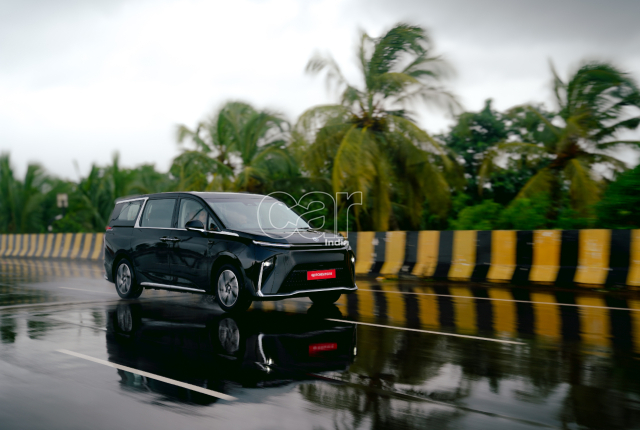
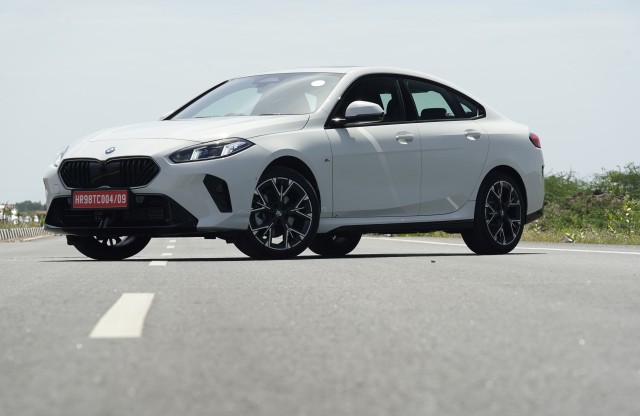
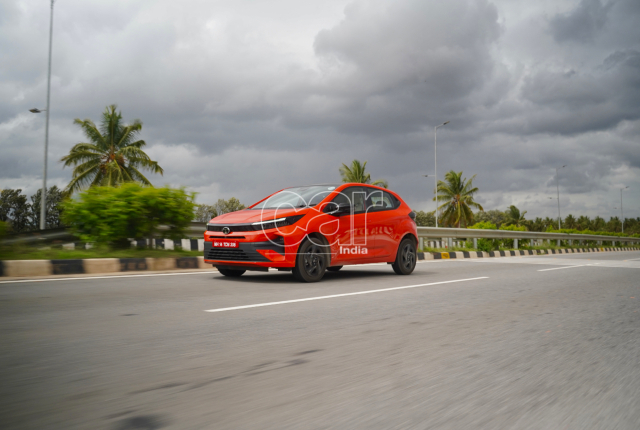
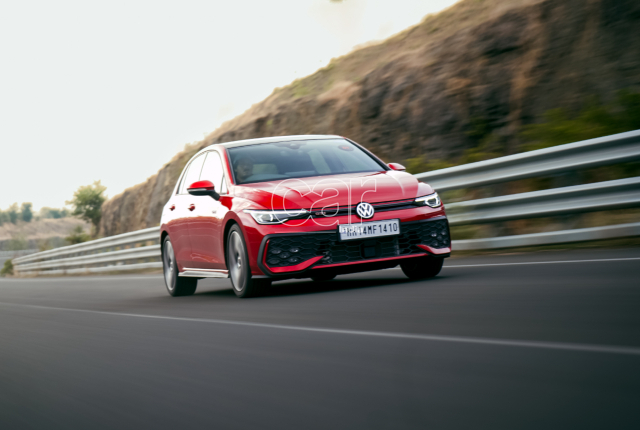
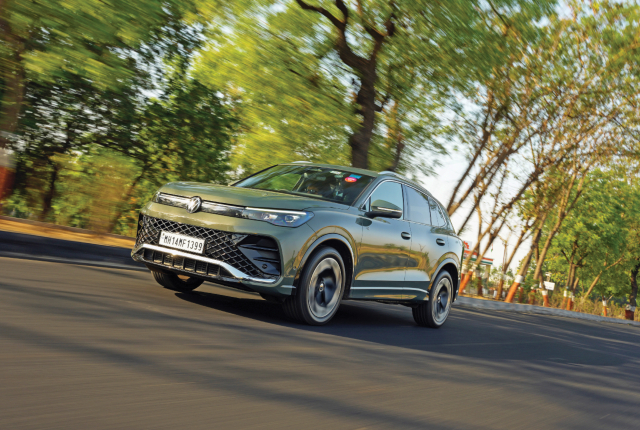



Leave a Reply